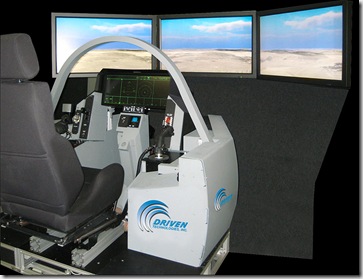This weekend, our family spent some time at the pool. While at there, I discussed the air show that was in town with a friend. That’s where this idea formed. Planes and business. So here it goes.
Social Marketing, like the tactic in vogue at this hour (Social CRM) in my mind is all about effectively aligning information with activity. To me, it’s sort of like flying. Having the right information is critical to making the right decisions at the right time.
It’s not about too much or too little information, it’s all about having the right information necessary to make a clear decision and then being able to do something about it.
Any pilot who’s flown a Piper Cub knows it’s cockpit is pretty simple. Stick, rudders, airspeed, pressure gauges, fuel gauge, altimeter and maybe a horizon bar gauge is really all you need to fly yourself around at 800 feet on a sunny, lazy Sunday afternoon for an hour.

Managing a small business, like flying the Piper Cub, is pretty straight forward. A simple set of gauges help the business to understand if its offering is aligned with its customer base. When most of your customers you know on a first name basis, it’s easy to determine when something is wrong or if you are missing an opportunity. When a customer who regularly visits you every single week is missing, you simply call them and check in to see if everything is ok. When customers aren’t happy, they typically have a direct line to the owner who has the both the responsibility and the authority to make changes and will tell you. If they don’t, likely you’ll ask them when you see their patterns change.
As the business grows, simple dies. As much as we don’t want to admit it, it’s true. Bigger clients and/or more of them means the business must serve a more and more diverse set of demands originating from the stakeholders. (See? Even the language needed to describe the change gets a little more complex!).
More people + more needs = more variables.
Back to the plane for a moment. While flying a Piper Cub is simple, flying a 777 Dreamliner is not; even though the purpose is the same, air travel. The method and mode are very different. There are a whole new set of variables and realities that bear down on the Boeing jet that simply are not present in the Piper Cub. Each is engineered to navigate within very different conditions.
For the Piper Cub, linking activity to information means glancing at the airspeed indicator to know when to give the throttle a little more juice so as to not stall….or maybe just look out the window. In a Piper Cub, there are relatively few things to worry about and control.
It’s not quite as simple for the crew of the 777. Quite possibly, they might have the same airspeed issue. Knowing it and dealing with it are different. There is a lot to worry about and control.

Here’s the thing, though. In both cockpits, every gauge links to something very important which supports that single overarching goal-safe air travel.
The analogy to business should be the same. The tools and activities we build and deploy should all be linked together in some effective way which we can effectively understand, measure and control.
Like comparing the Piper to the Boeing, we should recognize that as the business grows, things will grow more complex and difficult and expensive. However, like the Piper and the Boeing, the goal and the requirements (i.e. safe air travel and appropriately linking everything) should not change.
In larger business enterprises, to be blunt, our focus shouldn’t be SCRM any more than it should be on adopting a listening tool or building out a social presence unless it is part of some unified engagement approach. Without integration into the enterprise’s operational structure, adopting new engagement initiatives or tools only adds a variable you can’t effectively measure or do anything about. This is sort of like having a gauge on your cockpit dashboard no one can identify (especially when it starts to blink red).
You have no idea how many times I have heard executives say, “I have no idea what to do with this listening report” or “there is so much information here, it is meaningless.” This sort of statement is a symptom of what I am talking about here. No breathing pilot has ever said, “I have no idea what do with this piece of information or blinking red light” or Let’s ignore it.” (Note I say breathing.)
For SCRM, or any of the other litany of social business tools to really be effective, we as practitioners need to spend a lot more time understanding and integrating these tools into the business rather than just getting excited about new ones. I acknowledge easier said than done but reject it shouldn’t be a top priority of the business.
To be successful, we have to link information to activity and tie those activities to a clear and overarching business goal…much like the plane’s ultimate goal of safe air travel. Don’t believe me? Well performing brands such as the behemoth Best Buy to the diminutive Solarwinds are focused on the nuts and bolts of integration every day.
The market place isn’t static, so yes, evolving business functions using new tools, technologies and process is appropriate. We should never stop testing and trying new things but in those situations, treat them as such until the bugs are worked out…and once they are, work them into your existing solution set.

This way, your customers can sit back and enjoy the flight, which is really what they want right?

